Fashion Notes: The Insincerity of Sen. John Fetterman’s Hoodie, Explained
Sen. John Fetterman’s (D-PA) anti-decorum work uniform at the United States Senate has the entire country (me included!) asking: Even if you can wear a hoodie and athletic shorts to work, should you?
News broke this week that Senate Majority Leader Chuck Schumer (D-NY) had defunded the dress code police — greenlighting the likes of Fetterman to join a plague that probably many of us have fallen victim to in recent years: excessive casualness.
Fashion is reflective of the times. I’ve hardly ever looked to Washington, D.C. for such commentary on our culture because it’s generally just suits and sheath dresses with some standouts once every decade or so.
To get to the bottom of Fetterman’s insistence on larping working poor in the Senate, I spoke to two of my favorite menswear aficionados: O.W. Root (Instagram linked here) and W. Matt Tinch (Instagram linked here).
“If you’re familiar with Fetterman’s history … he just got out of like a clinical depression, he was in a facility, and he’s come out publicly and talked about his depression,” Tinch told me over the phone.
“In one sense, Fetterman is authentic if you believe his story,” Tinch said. “However, it’s a question of how much of it is authentic. He’s obviously a person who can afford more than a hoodie and basketball shorts … If you know Fetterman’s history, it just seems odd. He’s portraying himself as just an average joe, and it feels dishonest.”
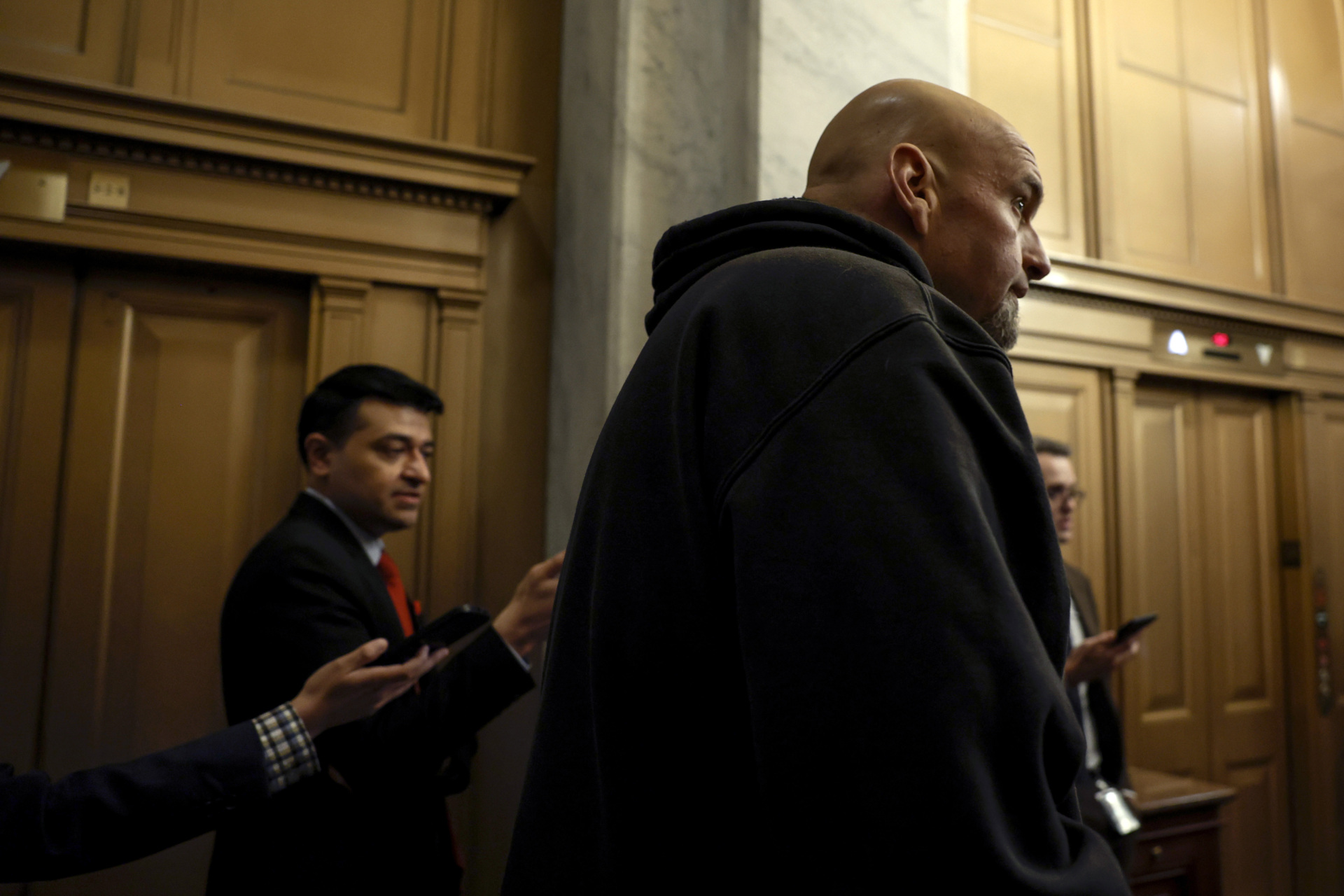
Sen. John Fetterman (D-PA) arrives to the U.S. Capitol Building on April 17, 2023 in Washington, DC. (Anna Moneymaker/Getty Images)

Sen. John Fetterman (D-PA) has a quick exchange with Sen. Joe Manchin (D-WA), right, as Fetterman walks to a vote on the Senate floor on June 22, 2023, in Washington, DC. (Ricky Carioti/The Washington Post via Getty Images)
When you first look at Fetterman, let’s say you know nothing about him, you may assume he was a truck driver turned U.S. senator or a former handyman or felon who got his act together. And then a quick Google search shows none of that to be the case.
In Fetterman’s own words to the Philadelphia Inquirer, he says he had a “cushy” suburban upbringing so much so that he was able to get an MBA from the University of Connecticut and later a master’s at Harvard without ever racking up student debt. By August 2022, his family’s assets totaled more than $700,000. Good for him, right?
I wanted to know if the experts assumed what I’ve assumed, that Fetterman is appropriating working class culture, or at least what he thinks working class culture is. It wouldn’t be so far-fetched considering tan Carhartt overalls and tees are dominated today by Brooklyn transplants rather than the construction and steel workers the heavy-duty duds were intended for.
“He is cynically appropriating clothing that reads as a working class stereotype,” Root told me over Instagram. “He’s doing this intentionally as a cynical move to be seen as something he is not — it’s a costume.”
“I would be willing to bet that if you took a poll of working class American men and asked them ‘What would you wear if you were invited to speak to the Senate?’ I suspect that most would not say a hoodie and shorts,” Root noted. “Most, even if they wear that during their average day, would think they should wear something more formal, something which shows respect for the place and the setting.”
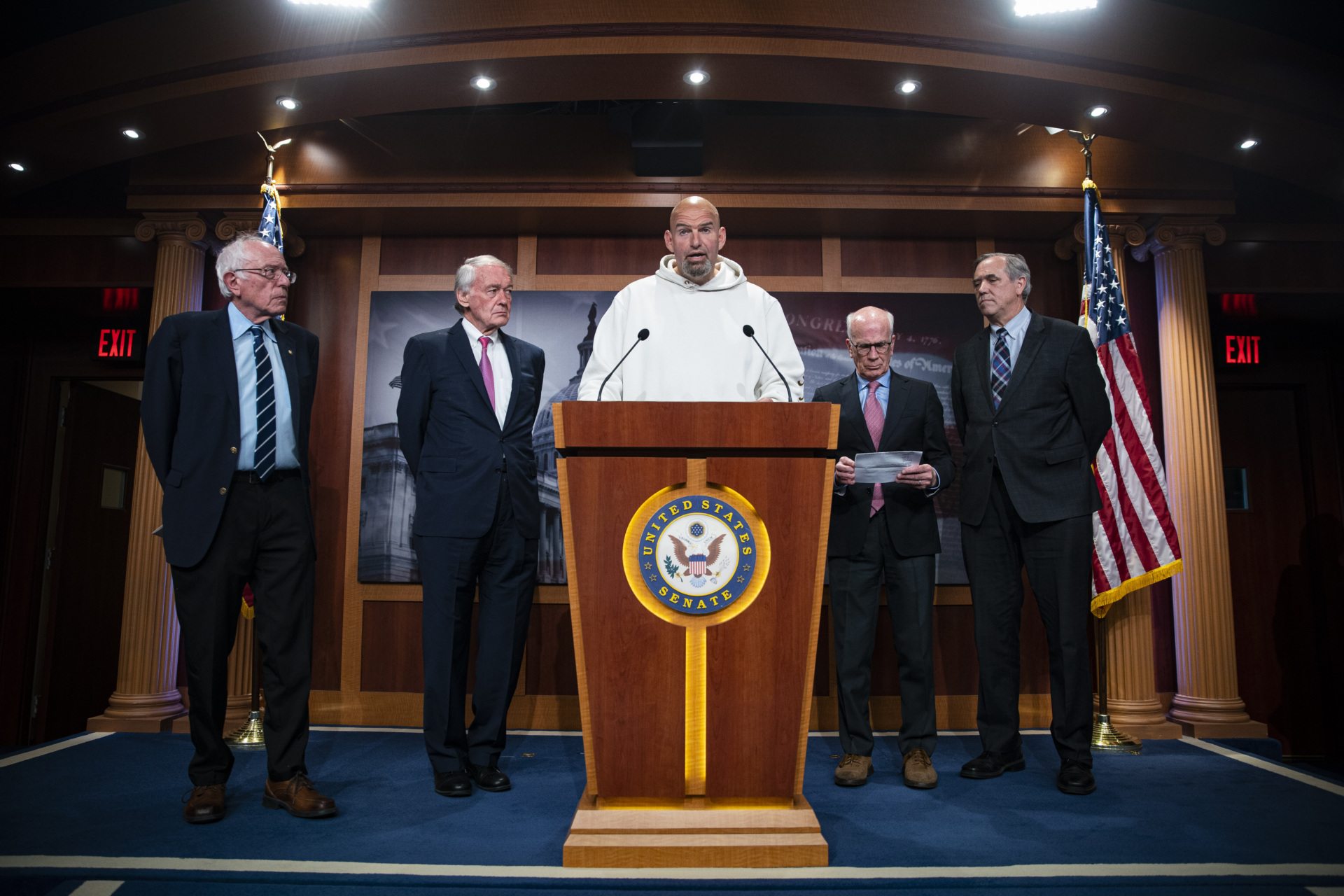
Sen. John Fetterman (D-PA) speaks during a Capitol Hill press conference on May 18, 2023, with Sen. Bernie Sanders (I-VT), Sen. Ed Markey (D-MA), Sen. Peter Welch (D-VT), and Sen. Jeff Merkley (D-OR). (Al Drago/Bloomberg via Getty Images)

Sen. John Fetterman (D-PA) exits the Senate floor on May 3, 2023. (Anna Rose Layden/Bloomberg via Getty Images)
Aside from the fakery of it all, Root and Tinch agreed that Fetterman’s inappropriateness stems from a larger breakdown of national history, institutions, and respect. Put it this way, when you hold office, it’s not supposed to be about you, it’s about the people back home you’re representing and our nation.
In that regard, there’s nothing redeemable about Fetterman’s attire.
“The Senate is a place of decorum and respect and dignity, and it’s that way on purpose … You put rules in place like that because you represent the United States of America,” Tinch said. “It’s fascinating because as soon as a senator shows up in a hoodie, you realize how much people notice clothes and how important it is, what people wear.”
Root told me that the hoodies and shorts and sneakers are not only “clear disrespect” to the history of the Senate but “an example of the general cultural decay and destruction” throughout style in America.
Interestingly, Tinch puts the blame at the feet of Ukraine President Volodymyr Zelenskyy who showed up to address a joint session of Congress last year in a forest green sweatshirt, cargo pants, and Timberland-style construction boots.

Ukraine President Volodymyr Zelenskyy speaks during a joint meeting of Congress at the U.S. Capitol in Washington, DC, on Dec. 21, 2022. (Ting Shen/Bloomberg via Getty Images
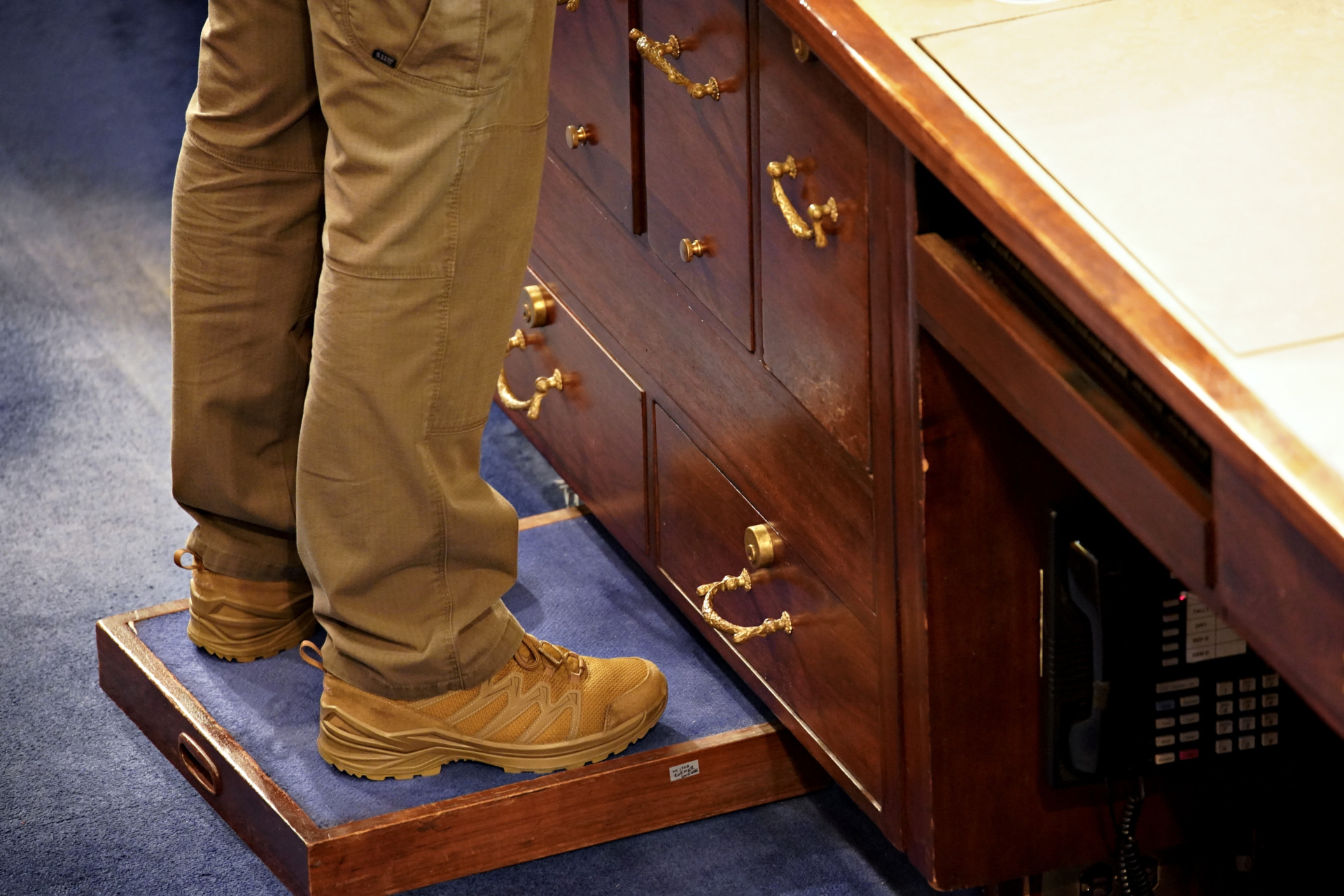
Ukraine President Volodymyr Zelenskyy speaks during a joint meeting of Congress at the U.S. Capitol in Washington, DC, on Dec. 21, 2022. (Nathan Howard/Bloomberg via Getty Images
“Ever since Zelenskyy showed up in a sweatshirt, you see this kind of casual attire momentum infiltrating the highest parts of our culture,” Tinch said.
The irony is that while Zelenskyy attempts to show disinterest in clothes while his country is at war, his sweatshirts are at the very least being custom embroidered if not also custom-made for him.
None of this is to say that Fetterman has to be just another suit. Fashion is about a moment in time, but style is how one expresses themselves day to day. At the end of the day, Fetterman and his wife Gisele are friendly neighborhood hipsters with a knack for design.
They quite literally live in a stunning renovated former car dealership in Braddock, Pennsylvania, that boasts original exposed brick, historic local decor, industrial contemporary Edison bulb fixtures, and found pieces that create a space that would have otherwise been bulldozed by some douchebag developer.
There’s no reason Fetterman can’t bring his own personal taste to the Senate in suits that fit the historical dress code. Think boxy, broad-shouldered blazers from Rag & Bone with perhaps kitschy ties made in Pennsylvania by a hometown tailor.
When reviewing Fetterman’s wardrobe, of course I had to look back at some of the great American men in D.C. history with timeless style.
President Teddy Roosevelt is among my favorites, mostly because he merged his love of exploration and his high society upbringing to develop a look of strength, masculinity, importance, and functionality.
“He was around in such an ascendent time,” Root told me when I asked his thoughts on Roosevelt’s attire. “His whole personal aesthetic reflected this so strongly.”
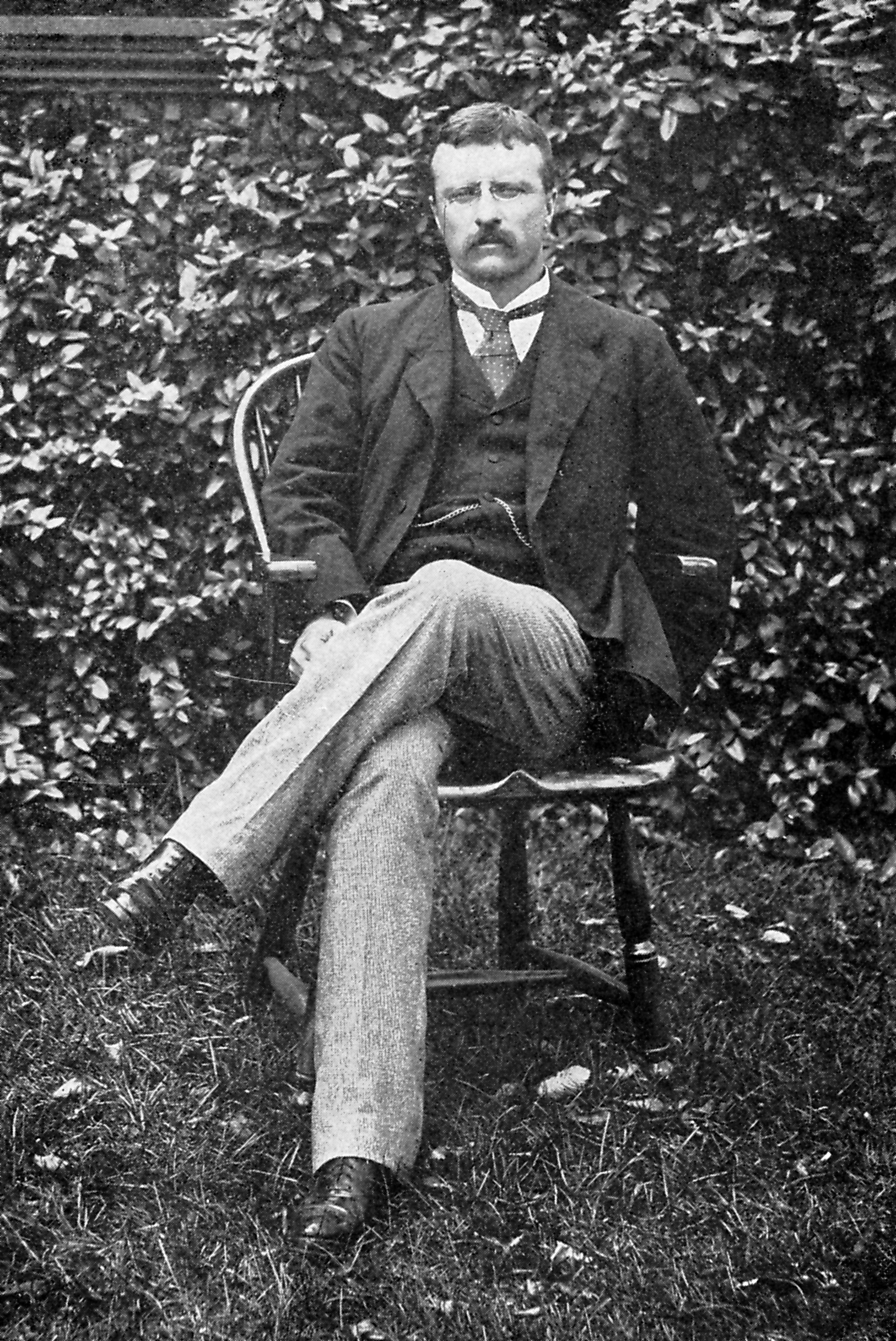
Theodore Roosevelt in his garden at Oyster Bay, Long Island, 1885. (Smith Collection/Gado/Getty Images).

Portrait of President Theodore Roosevelt. (Photo by Library of Congress/Corbis/VCG via Getty Images)
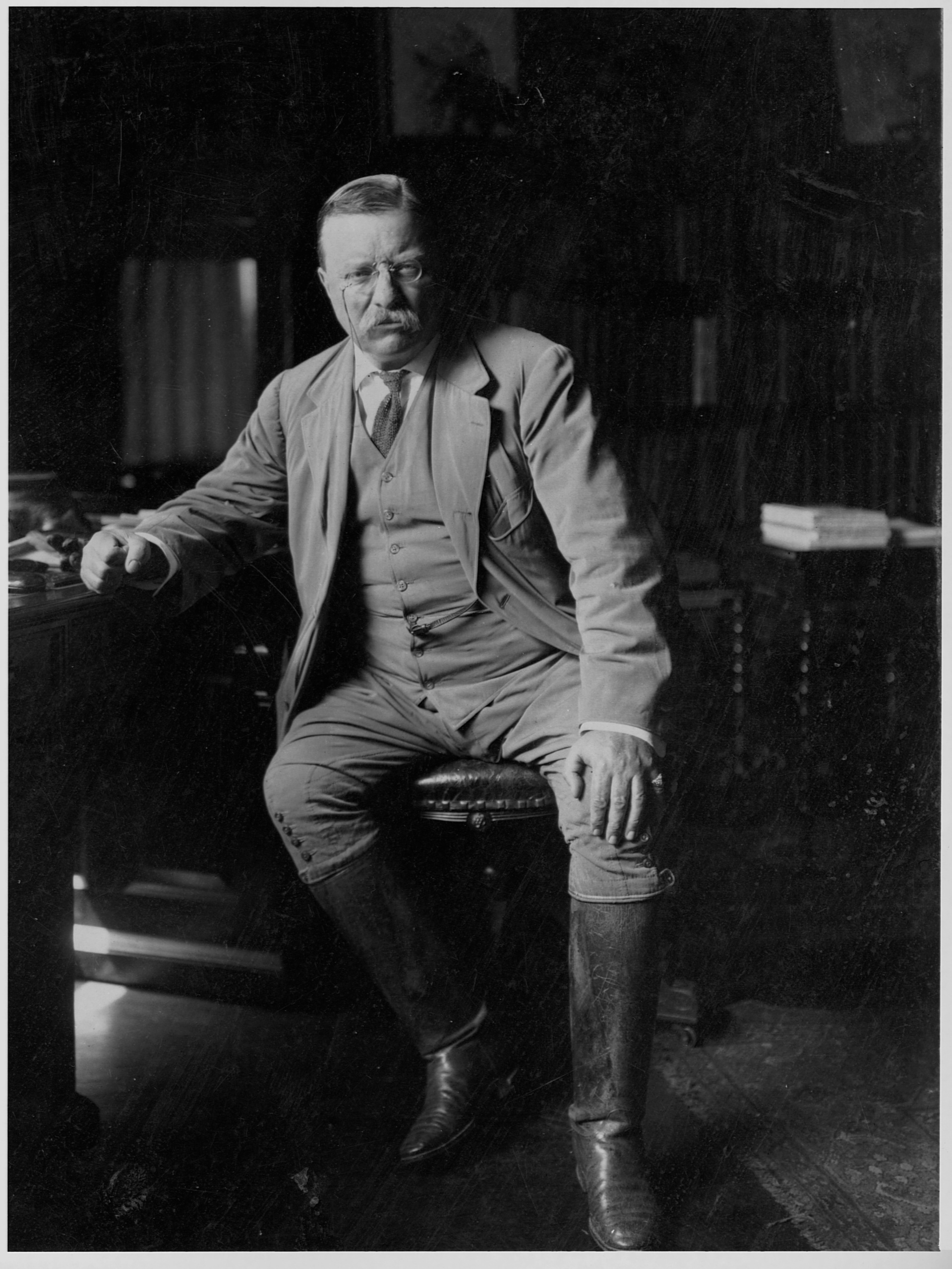
President Theodore Roosevelt wearing a suit and sitting on a barstool. (Photo by Library of Congress/Corbis/VCG via Getty Images)
Another is President Richard Nixon who, like his wife First Lady Pat Nixon, I consider to be one of the most underrated dressers in D.C. history. His blue suits and wide ties paired impeccably with the yellow tones of his Oval Office decor, embodying a sort of West Coast gold rush.
For this, I consider the term Nixonian to be less about Watergate and more about style.
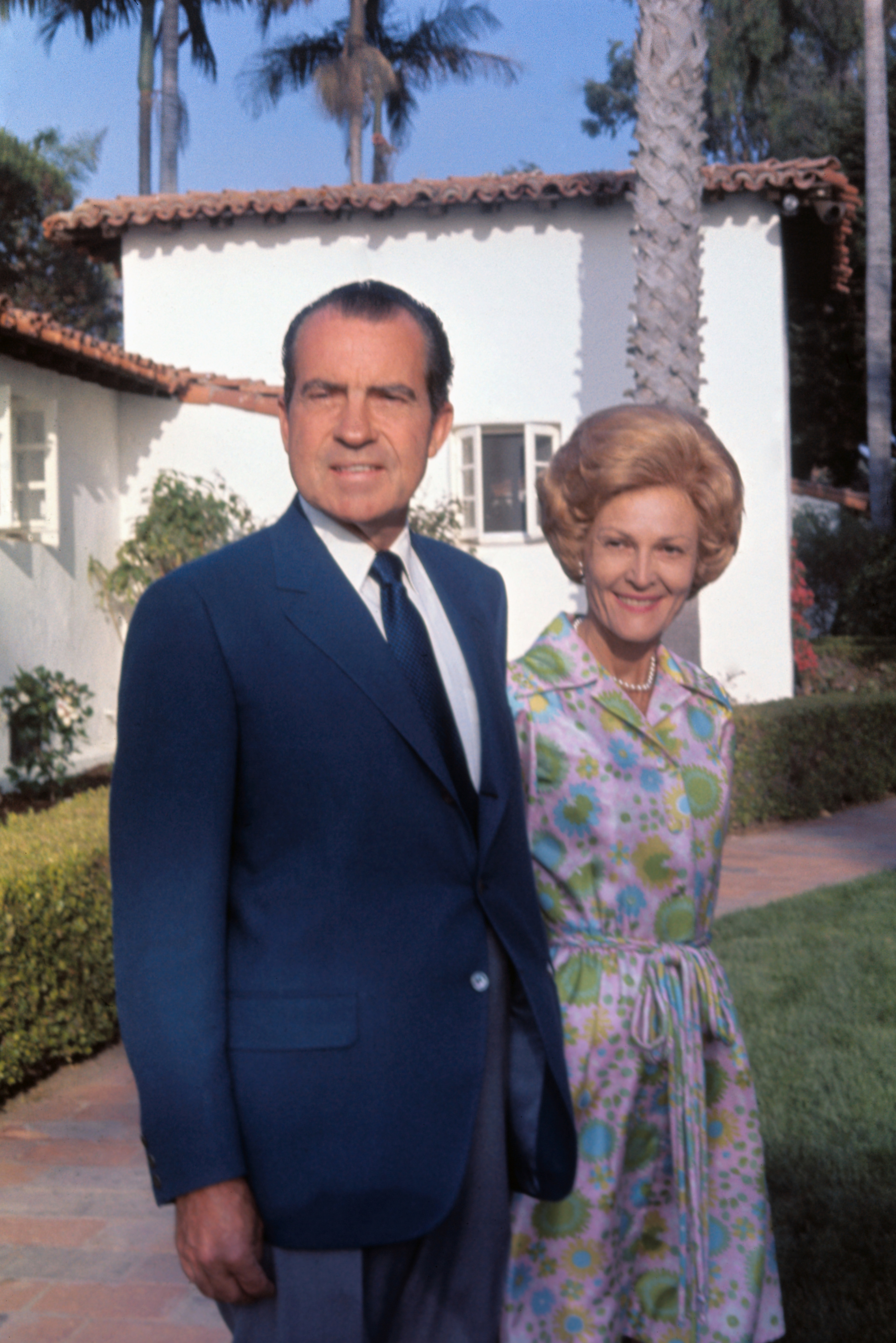
President and Mrs. Richard Nixon tour grounds of his “White House west” in San Clemente, California, on August 14th. The President is spending a month at the summer White House.
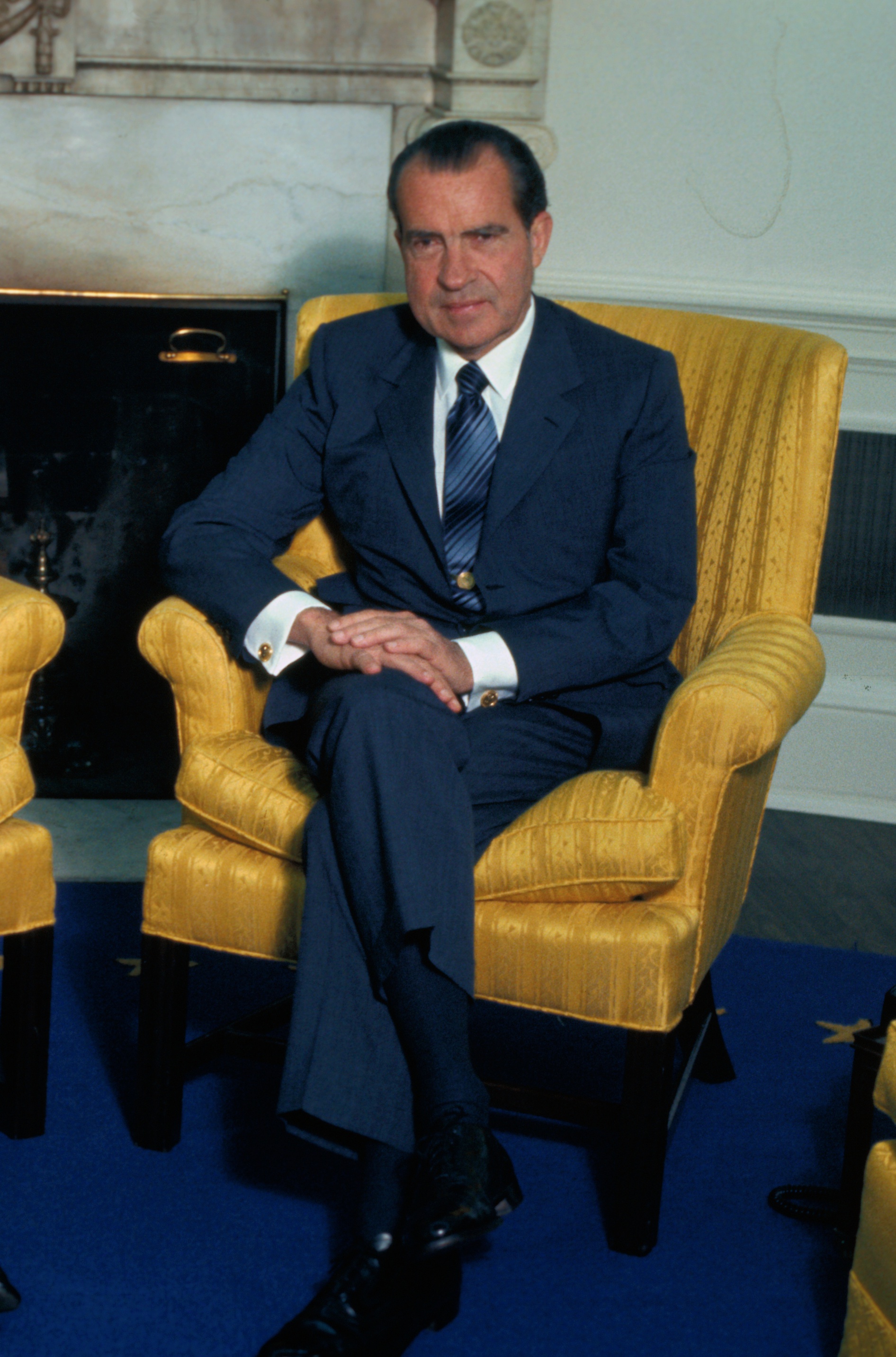
Washington: Indonesian President Suharto pays state visit to President Nixon at the White House. Photo shows Nixon and Suharto in Nixon’s oval office.
Naturally, I asked Root and Tinch which men they admired stylistically in politics. Tinch mentioned the colorful wardrobe of right-wing politico Roger Stone as inspiration but both mentioned President John F. Kennedy whom they consider a high point in American menswear.
“Obviously, I think the era of Kennedy is just classic,” Tinch said. “Camelot in the White House had a profound impact on a lot of things.”
For Root, Kennedy’s New England prep school aesthetic resonates with him to this day, telling me “JFK really exemplified certain elements of that style-world wonderfully.”

President Kennedy and his brother-in-law Peter Lawford aboard the United States Coast Guard yacht ‘Manitou’ (CORBIS/Corbis via Getty Images)
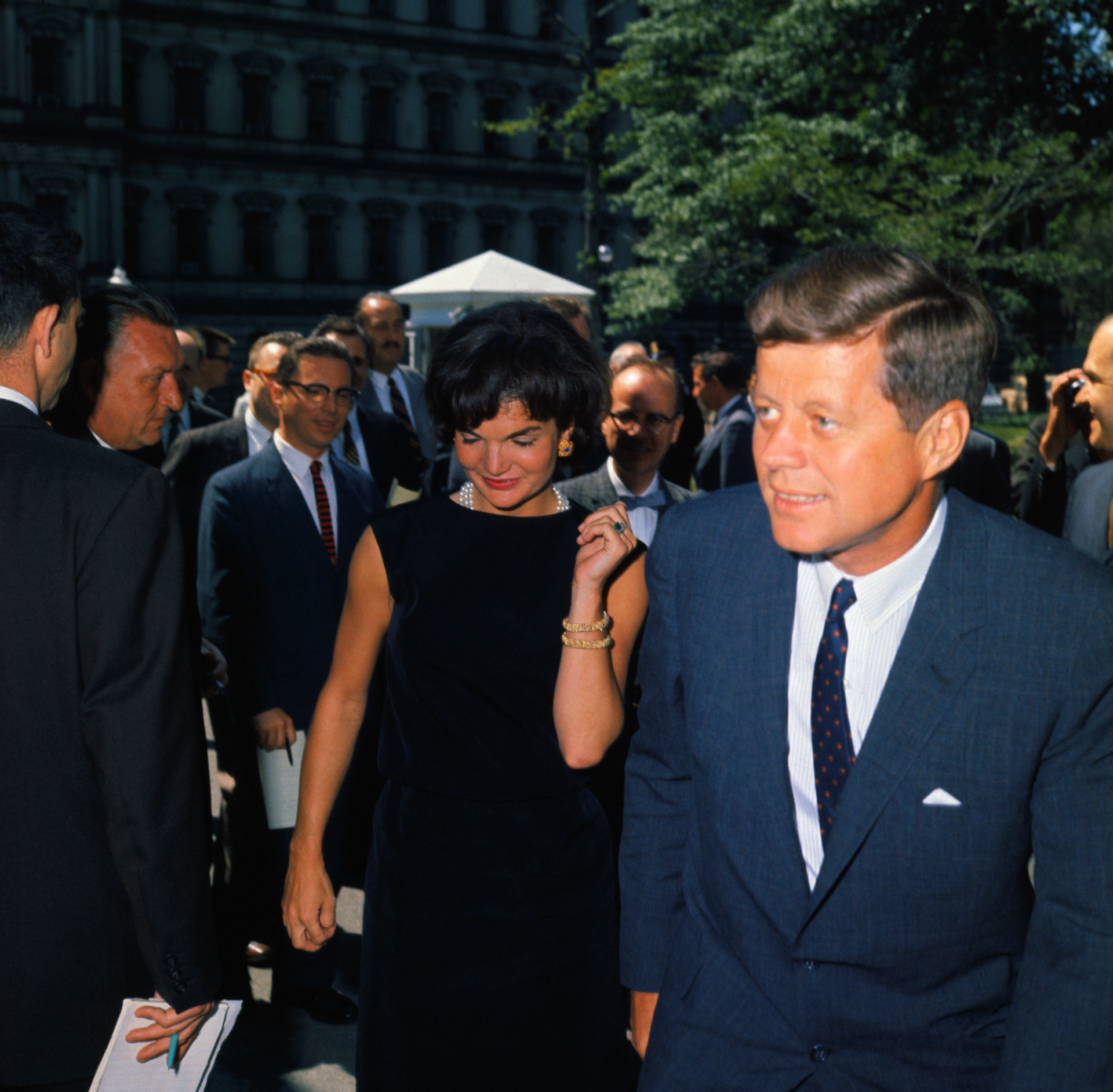
Washington, D. C.: John F. Kennedy with wife, Jacqueline, during a visit from Prince Rainier and Princess Grace.
Are there any style inspirations in politics today? Any men I’d emulate? That’s what I’m asking myself as I finish this column. If there are, I’ve yet to discover them. But a new team of players, God-willing, could change that.
John Binder is a reporter for Breitbart News. Email him at jbinder@breitbart.com. Follow him on Twitter here.




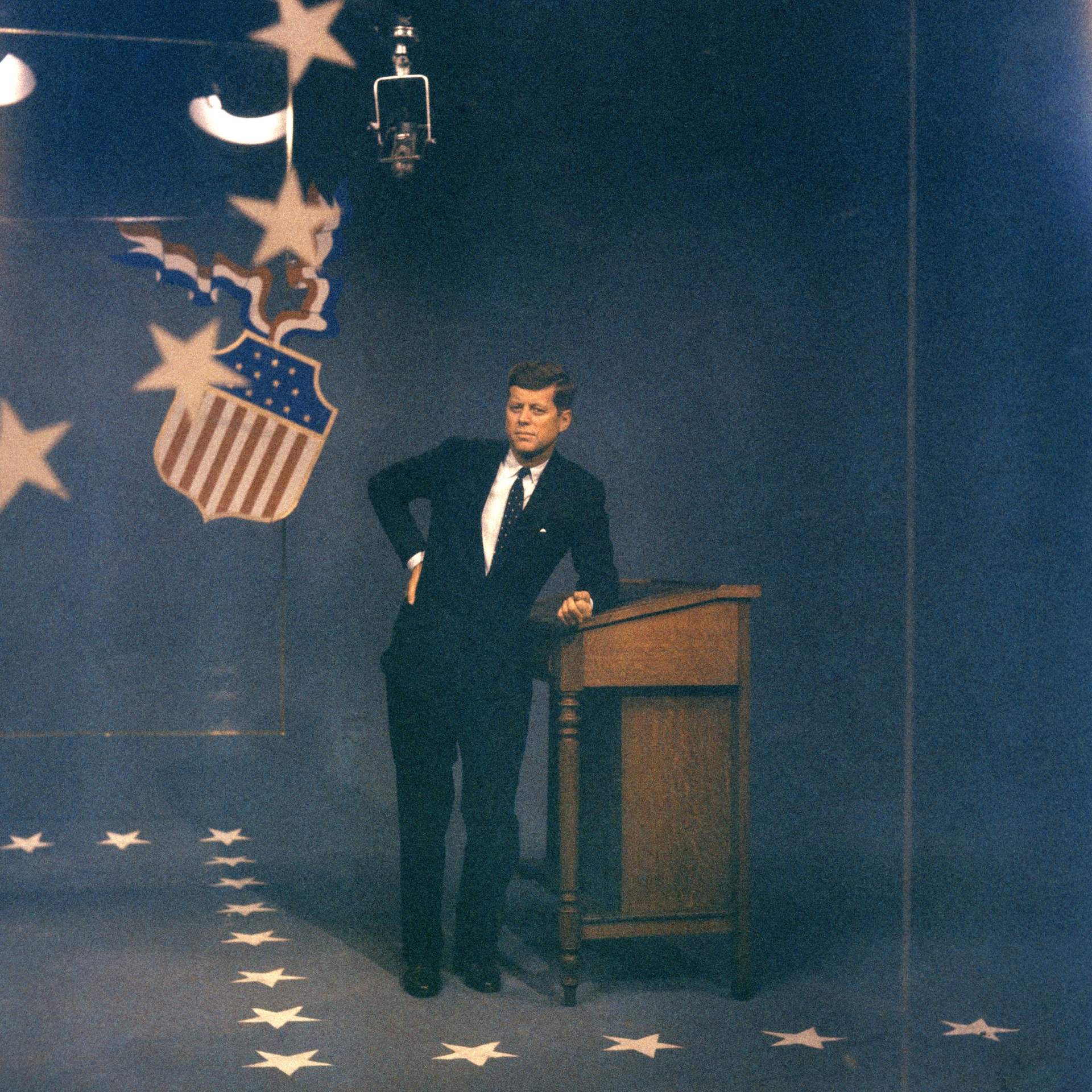


Comments are closed.